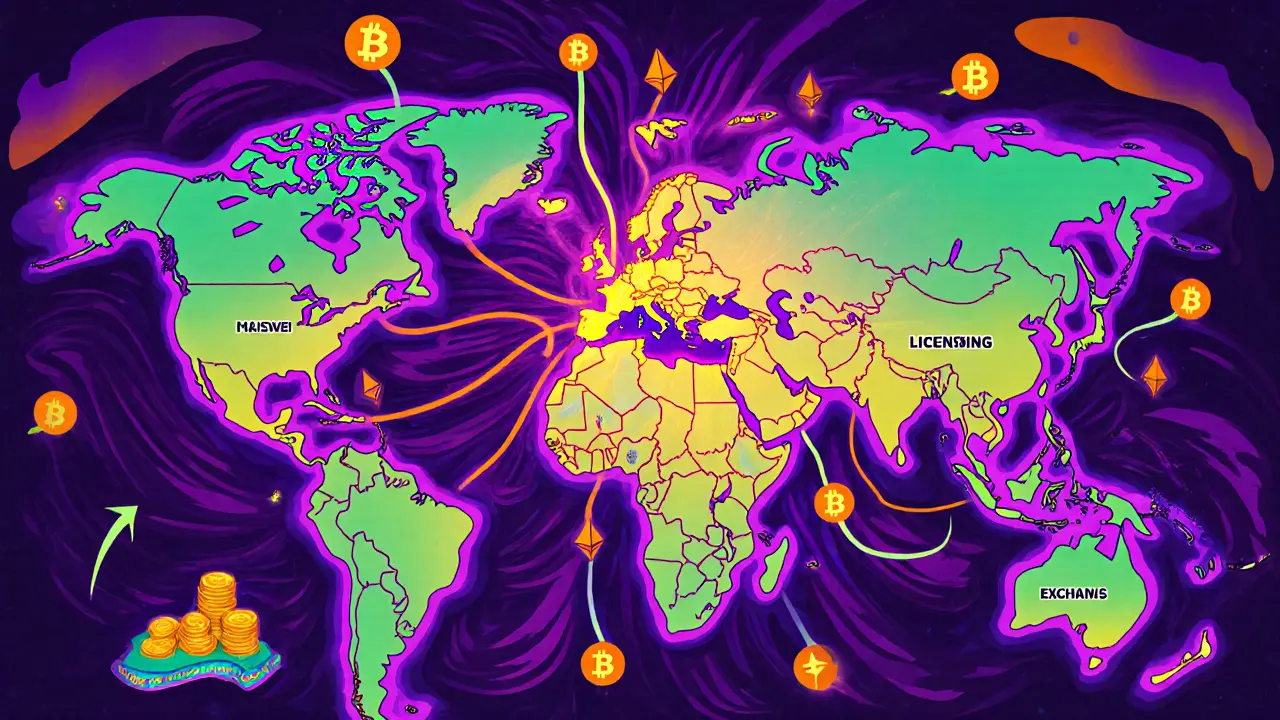Global Crypto Standards: What Rules Shape Crypto Today
When we talk about global crypto standards, the unified rules and frameworks that govern how cryptocurrencies are used, taxed, and tracked across borders. Also known as international crypto regulations, these standards aren’t suggestions—they’re legal requirements that can freeze your wallet, shut down an exchange, or land you in court. There’s no single global law, but there’s a growing set of rules that most major economies follow. If you’re trading, investing, or running a crypto business, ignoring them isn’t an option—it’s a risk.
Take the MiCA regulation, the European Union’s first comprehensive crypto law that sets licensing, transparency, and consumer protection rules for all crypto assets. It’s not just about Europe. Many countries now look to MiCA as the blueprint. It forces exchanges to prove they’re secure, tokens to disclose their purpose, and stablecoins to hold real reserves. If a project can’t meet MiCA, it gets blocked in one of the world’s biggest markets. Then there’s the AML crypto, anti-money laundering rules that require crypto businesses to verify users, track transactions, and report suspicious activity. The Travel Rule, a global AML requirement that forces exchanges to share sender and receiver info for transfers over $1,000—it’s now active in the EU, U.S., and over 50 other countries. Skip it, and you’re breaking the law.
And it’s not just Europe. The OFAC sanctions, U.S. government blacklists that freeze crypto wallets tied to terrorists, hackers, or sanctioned nations, apply to anyone doing business with U.S. persons—even if you’re in Nigeria or Vietnam. If your exchange doesn’t screen wallets against the OFAC list, you could be fined millions. Countries like Qatar ban crypto outright but allow tokenized real estate. India doesn’t ban wallets but taxes them so heavily they become unusable. These aren’t random policies—they’re pieces of a global puzzle. And the pieces are snapping together fast.
What you’ll find below isn’t a list of headlines. It’s a real-world view of how these standards play out. You’ll see how MiCA affects crypto businesses in 2025, why OFAC sanctions are catching more wallets than ever, how AML rules are forcing exchanges to shut down, and where crypto is still banned—or quietly working around the rules. No fluff. No guesses. Just what’s actually happening on the ground.
Global Crypto Regulatory Convergence Trends: How Countries Are Aligning Digital Asset Rules
Global crypto regulation is aligning around MiCA standards, with major economies adopting consistent rules for stablecoins and exchanges. This convergence is boosting institutional investment, reducing volatility, and pushing small players out of the market.
